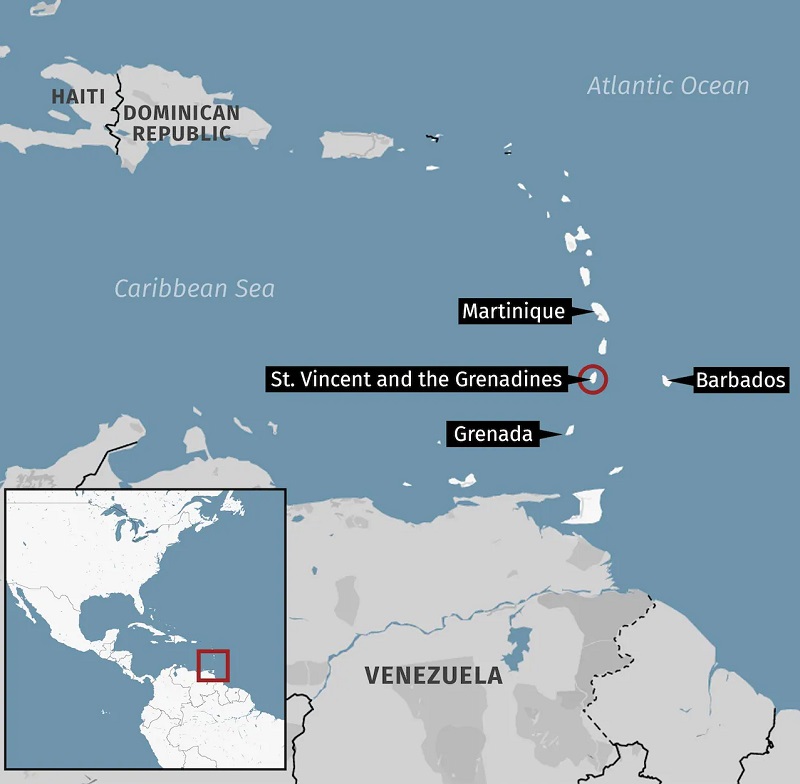Biodiversity & Environment
Sulphur Dioxide Emissions from Caribbean Volcano
- 20 Apr 2021
- 3 min read
Why in News
The Sulphur Dioxide (SO2) emissions from a volcanic eruption in the Caribbean (La Soufriere Volcano) have reached India, sparking fear of increased pollution levels in the northern parts of the country and acid rain.
- The Caribbean is the region roughly south of the United States, east of Mexico and north of Central and South America, consisting of the Caribbean Sea and its islands.
Key Points
- About La Soufriere Volcano:
- It is an active stratovolcano on the Caribbean island of Saint Vincent in Saint Vincent and the Grenadines.
- A stratovolcano is a tall, conical volcano composed of one layer of hardened lava, tephra, and volcanic ash. These volcanoes are characterized by a steep profile and periodic, explosive eruptions.
- Saint Vincent and the Grenadines, located in the southern Caribbean, consists of more than 30 islands and cays, nine of which are inhabited.
- It is the highest peak in Saint Vincent and has had five recorded explosive eruptions since 1718, most recently in April 2021.
- The last time the volcano had erupted was in 1979.
- It is an active stratovolcano on the Caribbean island of Saint Vincent in Saint Vincent and the Grenadines.
- Impact of the Eruption on Global Temperatures:
- Volcanic emissions reaching the stratosphere can have a cooling effect on global temperatures.
- The most significant climate impacts from volcanic injections into the stratosphere come from the conversion of sulphur dioxide to sulphuric acid, which condenses rapidly in the stratosphere to form fine sulphate aerosols.
- The aerosols increase the reflection of radiation from the Sun back into space, cooling the Earth’s lower atmosphere or troposphere.
- Bigger eruptions during the past century have caused a decrease in temperature of 0.27 degree Celsius or more on the Earth’s surface for up to three years.
- Sulphur Dioxide and Pollution:
- SO2 emissions that lead to high concentrations of SO2 in the air generally also lead to the formation of other sulfur oxides (SOx). SOx can react with other compounds in the atmosphere to form small particles. These particles contribute to Particulate Matter (PM) pollution.
- Small particles may penetrate deeply into the lungs and in sufficient quantities can contribute to health problems.
- Sulphur Dioxide and Acid Rain:
- Acid rain results when sulphur dioxide (SO2) and nitrogen oxides (NOX) are emitted into the atmosphere and transported by wind and air currents.
- The SO2 and NOX react with water, oxygen and other chemicals to form sulfuric and nitric acids. These then mix with water and other materials before falling to the ground.





